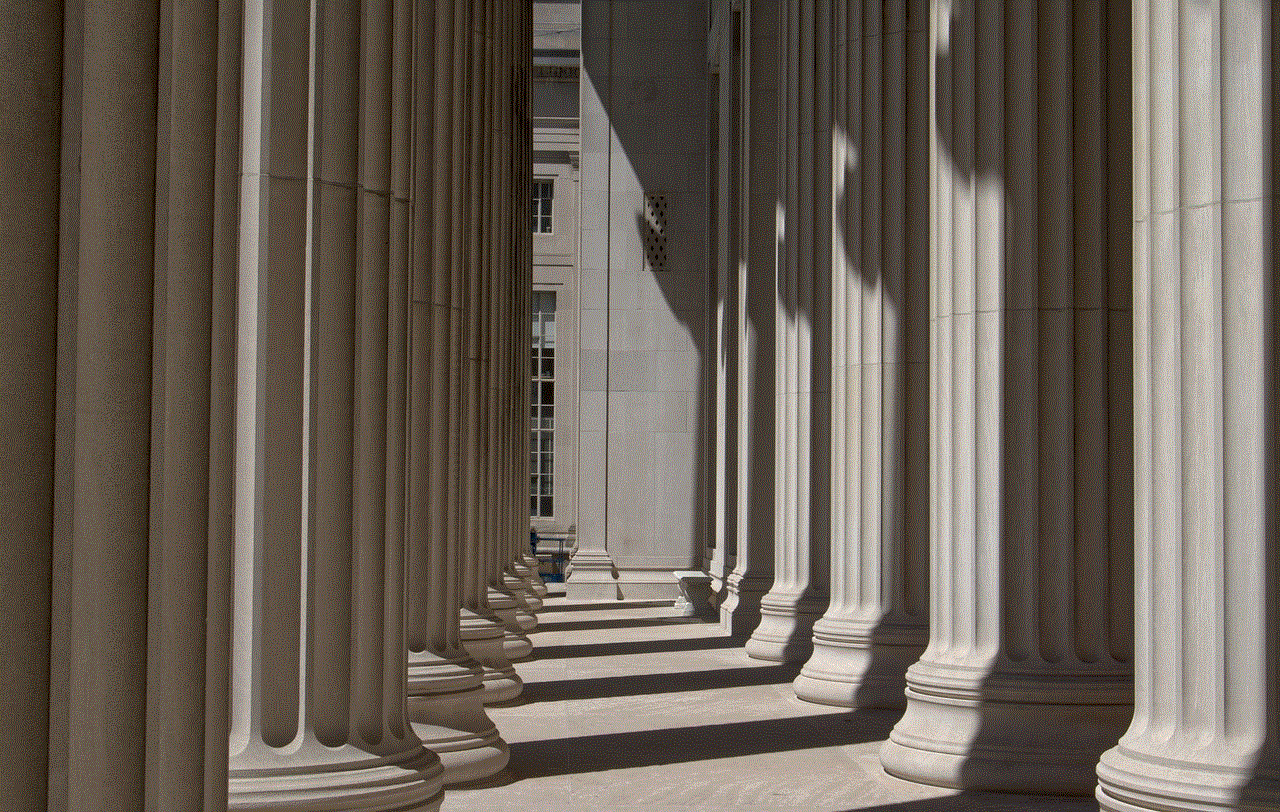can you put parental controls on roku 40 8
Roku has quickly become one of the most popular streaming devices on the market, with millions of users worldwide. With its vast selection of channels and easy-to-use interface, it’s no wonder that parents are turning to Roku as a source of entertainment for their children. However, as with any device, there are concerns about the content that children may have access to. This is where parental controls come in – a feature that allows parents to restrict certain content and monitor their child’s viewing habits. In this article, we will explore the different ways in which parents can put parental controls on Roku, and how these controls can help create a safer and more enjoyable viewing experience for children.
What Are Parental Controls?
Parental controls are a set of features that allow parents to restrict certain types of content on a device, such as TV shows, movies, and games. These controls are designed to help parents manage their child’s screen time and ensure that they are only exposed to age-appropriate content. There are several ways in which parental controls can be implemented, depending on the device and the platform being used. In the case of Roku, there are two main ways in which parents can put controls in place – through the device itself and through the channels that are available on Roku.
Parental Controls on Roku Devices
Roku devices come with built-in parental controls that can be accessed through the settings menu. To access these controls, follow these simple steps:
1. Press the Home button on your Roku remote to open the main menu.
2. Scroll up or down and select “Settings.”
3. Select “Parental Controls” from the list of options.
4. Select “Enable Parental Controls.”
5. Create a 4-digit PIN code that will be used to access the parental controls.
6. Choose the level of restriction you want to set for your child’s account – either “All” or “Some.”
7. If you choose “Some,” you can select specific ratings or channels that you want to restrict.
8. Select “Save Changes” to apply the settings.
Once the parental controls are enabled, any content that falls under the restricted category will require the PIN code to be entered before it can be accessed. This means that your child will not be able to watch any content that you have deemed inappropriate for their age.
Parental Controls on Roku Channels
In addition to the device-level controls, parents can also put restrictions on individual channels on Roku. This is especially useful for parents who have multiple users on their Roku device, each with their own preferences and age restrictions.
To set channel-specific parental controls, follow these steps:
1. From the main menu, select “Streaming Channels.”
2. Find the channel that you want to put restrictions on and press the asterisk (*) button on your remote.
3. Select “Channel Info.”
4. Select “Require Pin to Add” and enter your PIN code.
5. Select “Require Pin to Watch” and enter your PIN code.
6. Select “Save Changes.”
With these settings in place, your child will need to enter the PIN code every time they try to add a new channel or watch content on that particular channel.
Other Ways to Create a Safer Viewing Experience
Apart from the built-in parental controls, there are other ways in which parents can create a safer viewing experience for their children on Roku. These include:
1. Use the Kids & Family section – Roku has a dedicated section for kids and family-friendly content, making it easier for parents to find appropriate shows and movies for their children. This section is curated by age group, so parents can choose the content that is suitable for their child’s age.
2. Block mature content – Roku also allows parents to block mature content from appearing in the search results or recommendations. To do this, go to “Settings” > “Privacy” > “Smart TV experience” > “Limit TV shows and movies.”
3. Monitor viewing history – Roku devices come with a feature that allows users to view their watch history. Parents can use this to keep track of what their child is watching and make sure they are not accessing any restricted content.
4. Set time limits – Parents can also set time limits for how long their child can use the Roku device. This can be done through the “Set Time Limits” option in the “Parental Controls” menu. Once the set time limit is reached, the device will automatically turn off .
5. Use third-party apps – There are several third-party apps available on Roku that offer additional parental control features, such as filtering out specific keywords or blocking certain channels completely.
Benefits of Using Parental Controls on Roku
Implementing parental controls on Roku can have several benefits for both parents and children. These include:
1. Control over content – With parental controls in place, parents have more control over the type of content their child has access to. This can give them peace of mind knowing that their child is not being exposed to any inappropriate content.
2. Safe browsing – By blocking mature content and restricting access to certain channels, parents can ensure that their child is browsing and watching content safely.
3. Time management – Parental controls can help parents manage their child’s screen time and prevent them from spending too much time in front of the TV.
4. Customization – With the ability to set different restrictions for different users, parents can customize the viewing experience for each child in the household.
5. Education – Parental controls can also be used as a tool for educating children about responsible screen time and the importance of consuming age-appropriate content.
Conclusion
In today’s digital age, it is essential for parents to be aware of the type of content their children are consuming. With the help of parental controls on Roku, parents can create a safer and more enjoyable viewing experience for their children. Whether it’s restricting access to certain channels or setting time limits, these controls give parents the ability to manage their child’s screen time and ensure that they are only watching content that is suitable for their age. With these controls in place, parents can rest assured that their child is using their Roku device responsibly and safely.
pornography laws near virginia



Virginia, like most states in the United States, has strict laws regarding the production, distribution, and possession of pornography. These laws aim to prevent the exploitation of individuals and to protect the moral values of society. In this article, we will delve deeper into the pornography laws in Virginia, their history, and their implications.
History of Pornography Laws in Virginia
Pornography has been a controversial subject in Virginia for decades. The state’s first anti-pornography law was passed in 1878, making it illegal to distribute obscene materials. This law was targeted towards literature and images that were deemed to be of an explicit sexual nature. However, it wasn’t until the 1960s that the state began to actively enforce these laws.
In the 1960s, the Supreme Court’s ruling on obscenity in the case of Roth v. United States set the standard for what constitutes obscene materials. According to the ruling, materials are considered to be obscene if they appeal to the prurient interest, depict sexual conduct in a patently offensive way, and lack serious literary, artistic, political, or scientific value. This ruling was later refined in Miller v. California, which established the three-pronged test that is still used to determine obscenity.
In the 1970s and 1980s, the advent of the video cassette recorder (VCR) and the rise of the adult film industry brought pornography into the mainstream. This led to a surge in the production and distribution of pornography in Virginia and across the country. As a result, the state passed more stringent laws to combat the proliferation of pornography.
Current Pornography Laws in Virginia
Today, Virginia has several laws that govern the production, distribution, and possession of pornography. The most significant of these laws is the Virginia Code Section 18.2-372, which makes it illegal to produce, sell, or distribute obscene materials. Under this law, anyone who knowingly produces, sells, or distributes obscene materials faces a Class 6 felony charge, which carries a penalty of up to five years in prison and a fine of up to $2,500.
The Virginia Code also prohibits the possession of child pornography, which is defined as any material that depicts a minor engaging in sexually explicit conduct. Possession of child pornography is a Class 6 felony, and anyone found guilty faces a penalty of up to five years in prison and a fine of up to $2,500. However, the severity of the punishment increases if the individual has a prior conviction for possession of child pornography.
In addition to these laws, there are also regulations that govern the sale and rental of adult materials in Virginia. The Virginia Code Section 18.2-391.1 prohibits the sale or rental of sexually explicit materials to minors. This law also requires that all adult materials sold or rented in the state be labeled as such and kept in a separate area of the store.
Implications of Pornography Laws in Virginia
The strict laws governing pornography in Virginia have had significant implications for both individuals and businesses. For individuals, being charged with a pornography-related offense can have severe consequences, including a criminal record, prison time, and fines. These charges can also have a lasting impact on an individual’s personal and professional life.
For businesses, the laws have made it challenging to operate in the adult entertainment industry in Virginia. The regulations on the production, distribution, and possession of pornography have made it difficult for adult film producers and distributors to operate within the state. This has led to a decline in the number of adult entertainment businesses in Virginia, as many have been forced to shut down or move to other states with less stringent laws.
However, the strict laws in Virginia have also been praised by many for their effectiveness in combatting the exploitation of individuals through pornography. The laws have made it easier for law enforcement to crack down on illegal activities, such as the production and distribution of child pornography. They have also helped to protect minors from being exposed to explicit materials.
Challenges to Pornography Laws in Virginia
Despite the efforts of the state to regulate pornography, there have been several challenges to these laws over the years. One of the most significant challenges came in 2001 when the Supreme Court of Virginia declared the state’s anti-profanity law unconstitutional. The law prohibited the use of profane language in public, including on the internet. The court ruled that the law violated the First Amendment’s protection of freedom of speech.



Another challenge to the laws came in 2004 when the Supreme Court of Virginia struck down the state’s ban on the sale of sex toys. The court ruled that the ban violated the citizens’ right to privacy under the state’s constitution. This decision was later upheld by the Supreme Court of the United States in 2007.
Critics of the pornography laws in Virginia argue that they are too broad and often infringe on individuals’ constitutional rights. They also argue that the laws are outdated and do not reflect the changing societal views on pornography. However, proponents of the laws argue that they are necessary to protect society’s moral values and prevent the exploitation of individuals.
Conclusion
In conclusion, Virginia’s pornography laws have a long and complicated history. The state has continually updated and refined these laws to reflect changes in technology and societal views. While these laws have faced challenges, they continue to be enforced in an effort to protect individuals and society from the harmful effects of pornography. Whether these laws will continue to evolve in the future remains to be seen, but for now, they remain an integral part of Virginia’s legal system.
how can you tell if someone has messenger
In today’s digital age, communication has become easier and more convenient than ever before. With the rise of social media and messaging platforms, staying connected with friends and family has become effortless. One such platform that has gained immense popularity in recent years is Messenger. Developed by facebook -parental-controls-guide”>Facebook , Messenger is a free messaging app that allows users to send text messages, make voice and video calls, and share media with their contacts. However, with the growing concerns about online privacy and security, many people wonder how they can tell if someone has Messenger. In this article, we will delve into the various ways to determine if someone has Messenger and the potential implications of being on the platform.
Before we dive into the details, let us first understand what Messenger is and how it works. As mentioned earlier, Messenger is a messaging app that is owned by Facebook. It was initially launched in 2011 as a standalone app, but in 2014, it was integrated into the Facebook platform. This meant that users could access Messenger not only through the app but also through the Facebook website. With over 1.3 billion active users, Messenger has become one of the most widely used messaging platforms globally.
Now, the question remains, how can you tell if someone has Messenger? The simplest way to determine this is by checking if they have a Facebook account. As Messenger is owned by Facebook, it is an essential prerequisite to have a Facebook account to use Messenger. However, this method may not be foolproof as some users may choose not to link their Messenger account to their Facebook profile. In such cases, there are other ways to detect if someone has Messenger.
One such way is by searching for the person’s name in the Messenger app. If the person has Messenger, their profile will appear in the search results, and you can send them a friend request or message them directly. Another way is to check if the person’s contact information is synced with your Messenger app. If yes, their profile will automatically appear in your contacts list. However, this method will only work if the person has saved their phone number or email address on their Facebook profile.
Apart from these methods, there are a few other indicators that can give you a clue if someone has Messenger. The first one is visible when you are on the Facebook website and trying to send a message to someone. If the person has Messenger, you will see a small blue icon next to their name, indicating that they can receive messages on Messenger. On the other hand, if the person does not have Messenger, the icon will be greyed out, and you will not be able to message them through the platform.
Another indicator is the presence of the Messenger icon on their Facebook profile. If you see a small blue lightning bolt next to their name, it means they are active on Messenger. This icon appears when someone is currently using the Messenger app on their device. However, this does not necessarily mean that the person has Messenger; they could be using the platform as a guest. To confirm, you can click on their profile and check if there is an option to message them through Messenger.
Now that we have established some ways to determine if someone has Messenger let us explore the potential implications of being on the platform. Messenger, like any other social media platform, has its fair share of pros and cons. On the positive side, it allows people to stay connected with their loved ones, no matter where they are in the world. With features like voice and video calls, Messenger has made it easier to communicate with people in real-time.
Moreover, Messenger also offers a wide range of fun and interactive features, such as filters, games, and stickers, which make conversations more engaging. It also has a feature called “Messenger Rooms,” which allows users to create virtual rooms and invite their friends for a group video chat. This has proved to be useful, especially during the pandemic, when physical gatherings were not possible.
However, like any other online platform, Messenger has its fair share of risks and concerns. One of the major concerns is privacy. As Messenger is owned by Facebook, it collects a significant amount of user data, which is then used for targeted advertising. While this may seem harmless, it does raise concerns about the extent to which our personal information is being tracked and used.
Another concern is the potential for cyberbullying and online harassment on Messenger. With the anonymity that the platform offers, it becomes easier for people to hide behind fake profiles and send hurtful messages to others. This can have serious psychological implications, especially for young users who are more vulnerable to such online threats.
Moreover, being on Messenger also means being exposed to a vast amount of information and content. With the rise of fake news and misinformation, it is essential to be cautious about the information we consume and share on the platform. It is also crucial to be mindful of the people we interact with and to be aware of the potential dangers of online grooming and exploitation.



In conclusion, Messenger has become an integral part of our lives, and it has made communication more convenient and accessible. However, it is essential to be mindful of the potential risks and implications of being on the platform. While there are ways to determine if someone has Messenger, it is ultimately a personal choice to be on the platform or not. It is crucial to educate ourselves and our loved ones about online safety and to use Messenger responsibly. As the saying goes, “with great power comes great responsibility,” and it is up to us to use platforms like Messenger in a way that benefits us without compromising our privacy and security.